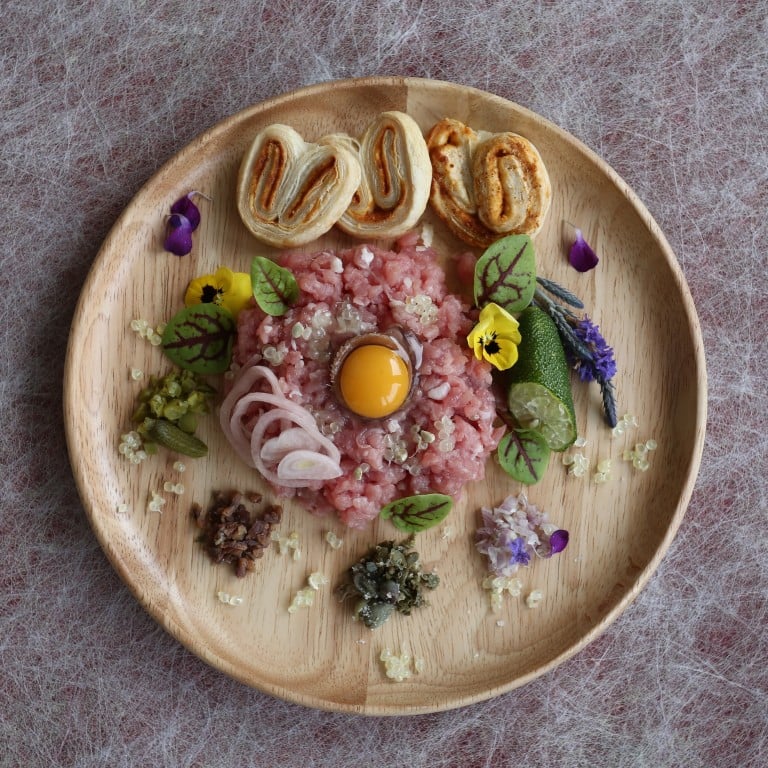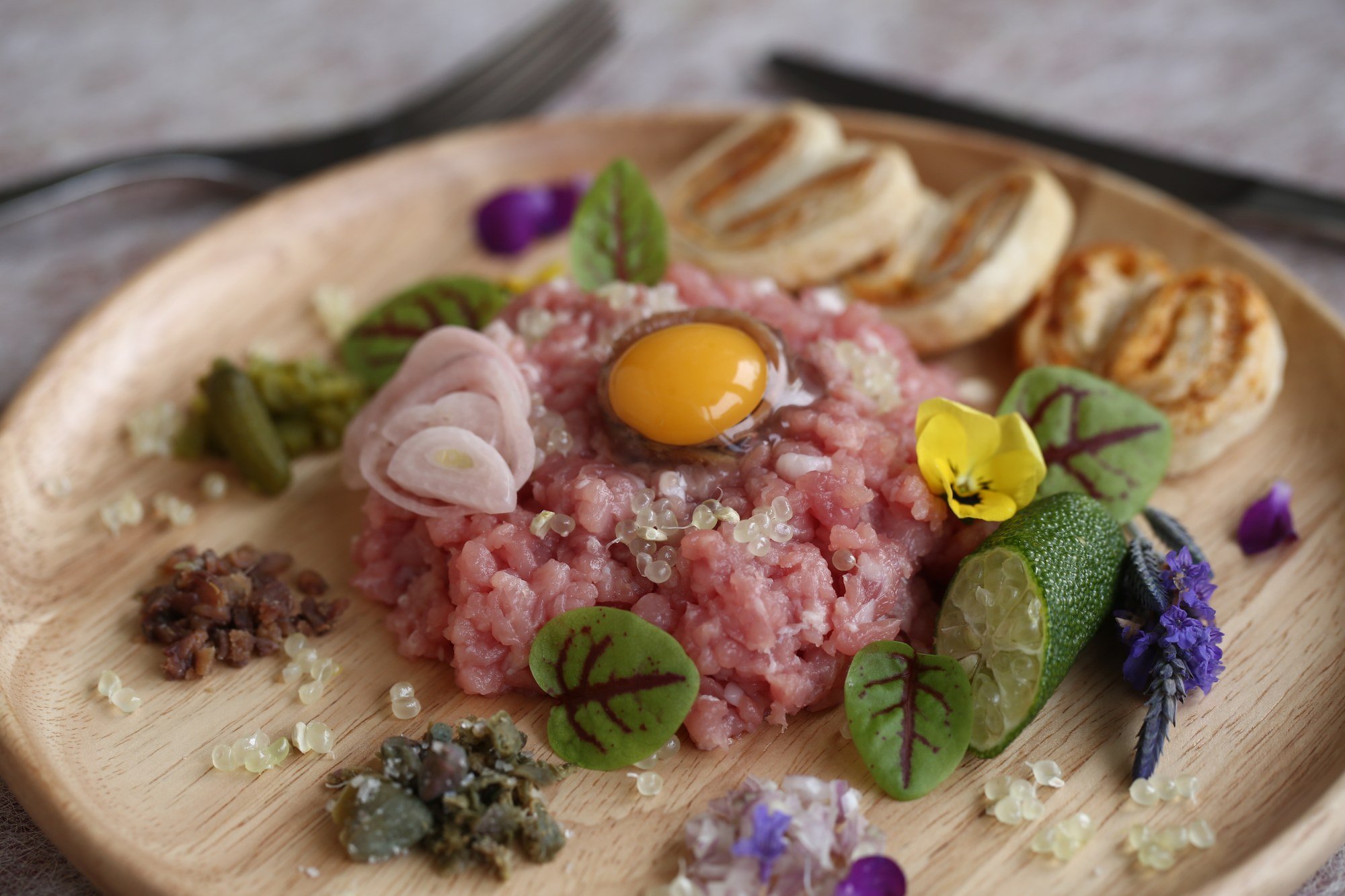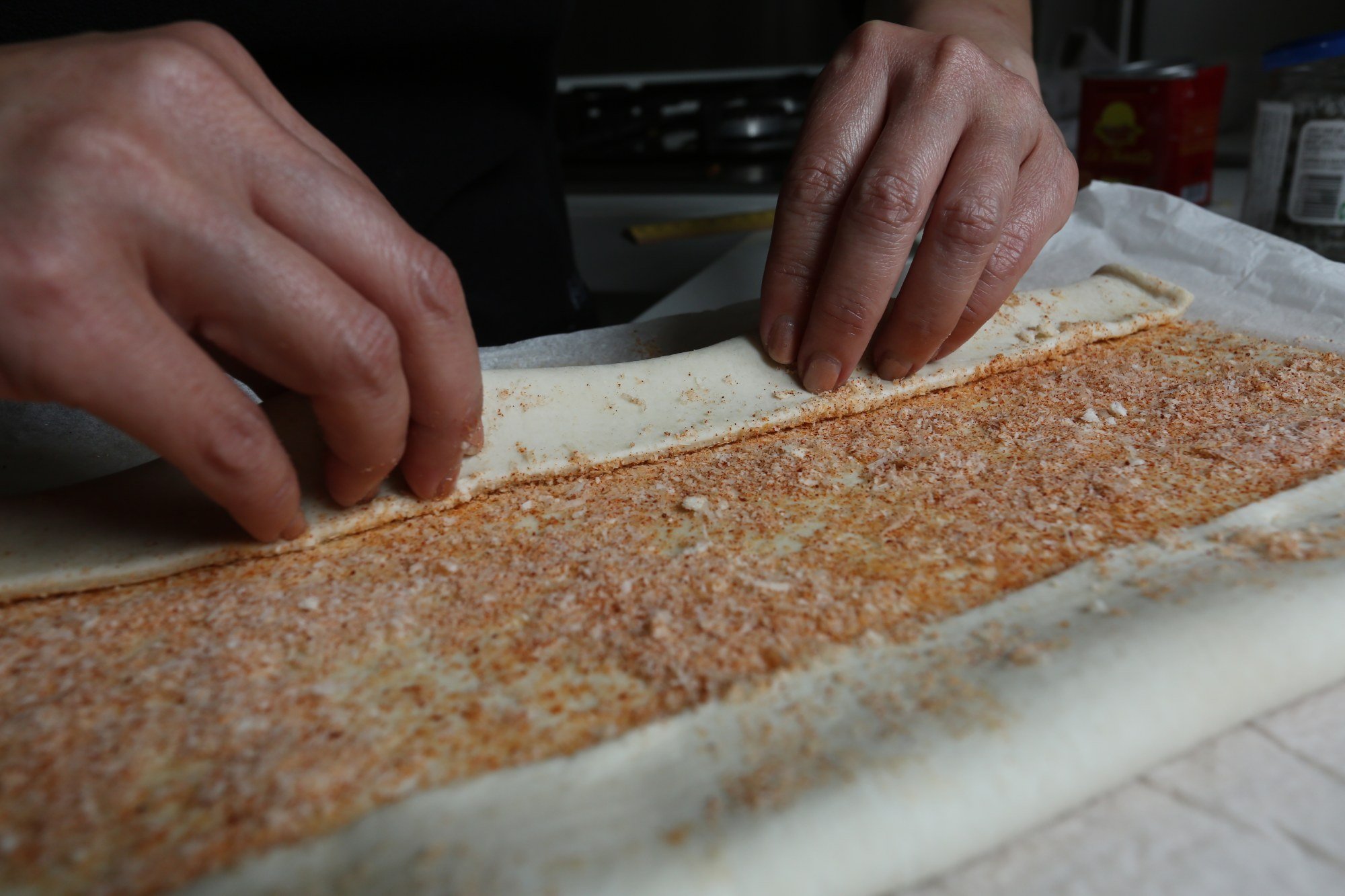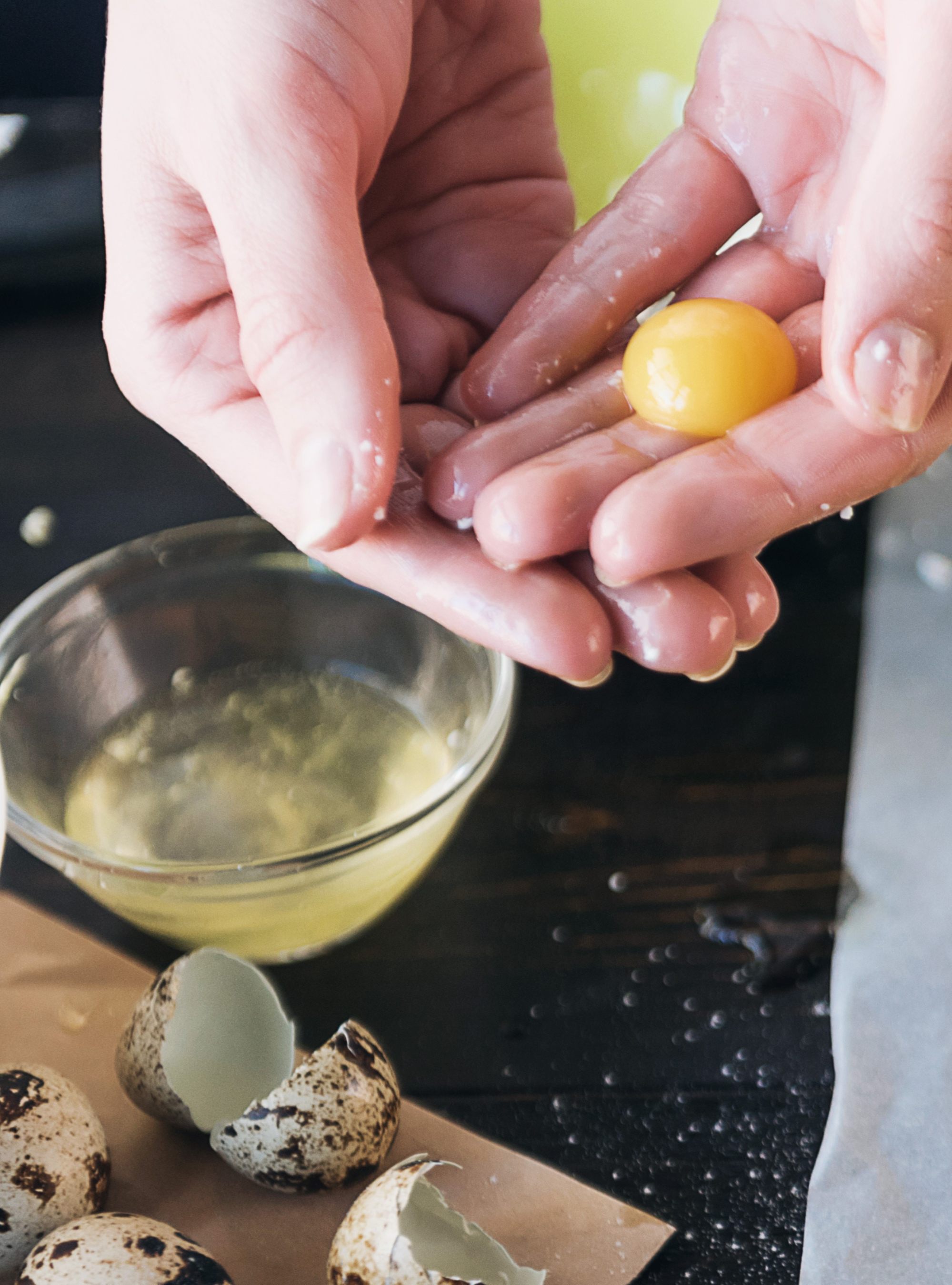
How to make veal tartare with pickled shallot and Parmesan-paprika palmiers – a fancy dinner party starter that’s lean, light and elegant
- Using veal instead of beef makes this dish – an ideal dinner party appetiser – leaner and lighter in texture and flavour so it only needs to be subtly seasoned
- Pickle the shallots the day before for more flavour. The palmiers can be made in advance, as can the veal, which should be chilled before chopping
This is a pretty, elegant and easy-to-make starter for a dinner party. The pickled shallot and Parmesan-paprika palmiers can be made several days in advance. You can prepare the ingredients for the veal tartare a couple of hours before serving, but be sure to store the hand-chopped meat in the coldest part of the refrigerator.
Veal tartare with pickled shallot, finger limes and Parmesan-paprika palmiers
Because veal is leaner than beef, tartare made with this meat is lighter in texture and flavour than the more common steak version. For this reason, I omit some of the usual seasonings used for steak tartare, such as Tabasco, mustard and Worcestershire sauce. Use veal from humanely reared animals.
Finger limes – a type of citrus from Australia – might be difficult to find. Also called “citrus caviar”, because the juice vesicles are round and pop gently in the mouth, finger lime adds a lovely crunch to the veal tartare.
If you can’t find these limes, mix in the finely grated zest of one lemon to the veal at the same time you add the salt: the flavour will be different, but delicious nevertheless.
The pickled shallot should be made at least one day in advance.

Ingredients
For the pickled shallot
-
10 grams (1¾ tsp) fine sea salt
-
10 grams (2½ tsp) granulated sugar
-
100ml (¼ cup + 3 tbsp + 1 tsp) rice vinegar
-
150 grams (6 oz) shallots
For the Parmesan-paprika palmiers
-
1 square sheet (about 25cm x 25cm/10 in x 10 in) puff pastry, preferably a brand that uses butter instead of vegetable shortening
-
1 egg
-
15 grams (1 tbsp) freshly grated Parmesan cheese
-
½ tsp smoked paprika
How to make cold noodles with Sichuan shallot and garlic chilli sauce
For the veal tartare
-
400 grams (14 oz) boneless veal steak or tenderloin
-
10 grams (2 tsp) salted capers
-
2 fresh shallots
-
2-4 cornichons, depending on size
-
8 anchovy fillets in olive oil, drained, divided
-
4 quail eggs
-
2 or 3 finger limes, depending on size (or the grated zest of one lemon)
-
Fine sea salt
-
Small leaves (such as nasturtium or beetroot) and/or edible flowers, to garnish
1 Make the pickled shallot. Put the salt, sugar and vinegar in a saucepan. Place the pan over a low flame and heat, stirring often, until the salt and sugar dissolve. Bring to the boil, then remove from the heat and cool to room temperature. Peel the shallots, then slice them as thinly as possible into rounds. Put the pieces in a glass jar and cover with the vinegar mixture. Put the lid on the jar. Shake the jar, then leave at room temperature for one day. Refrigerate for longer storage.
2 Make the Parmesan-paprika palmiers. Whisk the egg with a pinch of salt and 10ml of cold water. In a bowl, mix together the Parmesan cheese and smoked paprika.

3 Cut the square of puff pastry in half and place the two rectangles (about 25cm x 12.5cm each) so the long sides are parallel to the near edge of the work surface. Brush the egg lightly but evenly over the puff pastry. Sprinkle the Parmesan-paprika over the rectangles, then gently press the mixture so it adheres. Use a ruler to measure the short length of the rectangles and use the back of a knife to lightly notch the sides at the halfway mark. Fold up the bottom half of the pastry so it comes halfway to the centre, then fold that over so it comes to the precise centre. Fold the top half of the pastry over the same way, so the bottom and top halves meet at the centre, then fold the bottom half over the top half – there will be six layers of pastry. Gently press the entire length so the layers adhere slightly, but are not crushed.
4 Refrigerate for 30 minutes. Preheat the oven to 200 degrees Celsius (400 degrees Fahrenheit).
5 Use a sharp knife to slice the folded-up puff pastry layers about 6mm thick. Lay the slices on a tray lined with baking paper, leaving about 1cm of space between them, so they have room to expand. Bake at 200 degrees for 10 minutes, then turn the heat to 180 degrees (360 degrees Fahrenheit) and continue to bake until the palmiers are done: they will lift easily from the baking paper and be firm, fragrant and lightly browned. Cool to room temperature, then store in an airtight container.
6 Make the veal tartare. Put the veal in the freezer for about 30 minutes – it is easier to hand-chop when it is cold. Rinse the salted capers with cool water, then dry with paper towels. Finely chop the capers. Finely mince the fresh shallots, cornichons and four of the anchovies. Hand-chop the veal into a medium-fine mince.
7 Lightly season the veal with salt (if you are using lemon zest, mix it in now), then shape the meat into four loose patties and place them on serving plates. Make a slight indentation in each of the four patties.

8 Crack the quail eggs and discard the whites. Put the egg yolk into the indentation in the veal, then surround each yolk with one of the four reserved anchovy fillets. Divide the minced capers, shallot, cornichons and anchovies between the plates, placing each ingredient in a separate mound. Lay several slices of pickled shallot on the meat. Cut the finger limes in half and divide the juice vesicles over each portion, scattering them over the meat and on the plate. Garnish each portion with leaves and/or edible flowers, then serve with the palmiers.
Stylist: Nellie Ming Lee
This recipe is from the Post Magazine archives

